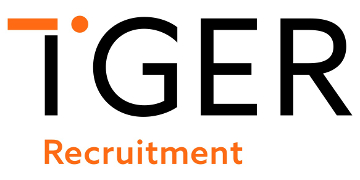The idea – and benefits – of trying to achieve a balance between the pressures of work and a personal life are well-documented. From home working to flexible hours, the solutions offered to help achieve this ‘balance’ are now commonplace. But is it time to reconsider the concept? After all, balance is only achieved when we have an equilibrium between two sides. The effort to walk the tightrope between these, often opposing, elements adds its own tensions. Perhaps it’s time to look at another option.
The rise of work/life ‘blend’
This concept was something that struck Anna Rasmussen, CEO and founder of software company Open Blend. As she explains it: “Blend implies that you can have a number of different things that you are focusing on in your life at the same time, whereas balance suggests that two sides are opposing and when one is going up the other is going down.”
More than ever before there is a need for individuals to be able to connect with employers on a more human level, and to be able to bring their whole self to work. Many businesses have tackled this head on with large-scale macro initiatives, e.g fruit Friday, gym memberships and pool tables, and while these have their place, what employees are really asking for is to be seen and heard on an individual (micro) level.
The Open Blend tool asks individuals to select eight drivers from both their home and work life that matter most to them. From spending quality time with family to career progression, the individual then scores how fulfilled they are currently against where they feel they need to be to achieve their potential. This creates a ‘blend gap’ and a ‘target blend’ that both the manager and employee can work towards.
The platform supports managers to be able to have effective and meaningful conversations by utilising coaching frameworks, creating actions and objectives to enable the individual to progress towards their target blend.
But Rasmussen is of the opinion that only about a third of UK businesses are culturally ready for this type of initiative. So what can your business do to create said culture?
Pave the way for flexible working
The first task is to not just offer but encourage flexible working. Recent research from PowWowNow found that 47% of workers are not encouraged to work flexibly at all, while of 58% of workers who could choose flexible options, a full 24% didn’t take up the option to do so.
Encouraging the uptake of a flexible working policy certainly remains a challenge for many. One way to do so includes promoting it through your internal communication channels, as well as encouraging senior management to lead by example – employees are more likely to take advantage of flexible working if they see their managers doing the same.
While it’s just one part of the ‘blend’ puzzle, encouraging the uptake of flexible working can give employees the opportunity to fill the gap between where they are and where they want to be. For example, some employees will want to prioritise time to do the school run or get home for dinner with the kids, while others may look to fit in a passion project or have more time to exercise. Whatever their priorities, knowing that they have the option of adapting their day to suit their needs makes achieving a work/life blend much easier.
Importance of benefits
Re-evaluating your benefits packages is the second project to take on in preparation for making your workplace ‘work/life blend’-ready. Does your current offering apply to a wide range of ages, faiths and ethnicities? Does it cater for your graduates as well as your middle management and leaders? Is there potential to offer a flexible benefits strategy that allows employees to choose which benefits they’d like to use?
Taking steps to redesign your benefits will make achieving a work/life blend easier as there is wider scope to enable change. Offering a diverse range of benefits is a tangible demonstration of the efforts you are taking to support your workforce and can often make filling the gap more achievable.
What next?
With the idea of work/life blend only increasing in popularity, businesses who ignore this transition are likely to lose out on top talent. By taking the first steps away from the idea of ‘balance’ towards ‘blend’ through initiatives like flexible working and soft benefits, you will rise ahead of competitors, improve employee engagement and by proxy enhance staff retention and attraction.
Tiger’s latest publication, An Exceptional Working Life: Creating Better Workplaces, explores the concepts of work/life blend, flexible working and much more. Request your copy today.
Rebecca Siciliano is managing director of Tiger Recruitment, which specialises in PA recruitment in London and beyond









